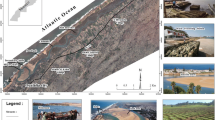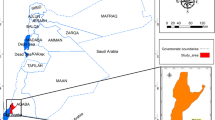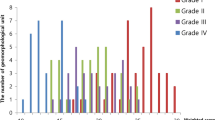Abstract
Some countries, including Taiwan, have adopted strategic environmental assessment (SEA) to assess and modify proposed policies, plans, and programs (PPPs) in the planning phase for pursuing sustainable development. However, there were only some sketchy steps focusing on policy assessment in the system of Taiwan. This study aims to develop a methodology for SEA in Taiwan to enhance the effectiveness associated with PPPs. The proposed methodology comprises an SEA procedure involving PPP management and assessment in various phases, a sustainable assessment framework, and an SEA management system. The SEA procedure is devised based on the theoretical considerations by systems thinking and the regulative requirements in Taiwan. The positive and negative impacts on ecology, society, and economy are simultaneously considered in the planning (including policy generation and evaluation), implementation, and control phases of the procedure. This study used the analytic hierarchy process, Delphi technique, and systems analysis to develop a sustainable assessment framework. An SEA management system was built based on geographic information system software to process spatial, attribute, and satellite image data during the assessment procedure. The proposed methodology was applied in the SEA of golf course installation policy in 2001 as a case study, which was the first SEA in Taiwan. Most of the 82 existing golf courses in 2001 were installed on slope lands and caused a serious ecological impact. Assessment results indicated that 15 future golf courses installed on marginal lands (including buffer zones, remedied lands, and wastelands) were acceptable because the comprehensive environmental (ecological, social, and economic) assessment value was better based on environmental characteristics and management regulations of Taiwan. The SEA procedure in the planning phase for this policy was completed but the implementation phase of this policy was not begun because the related legislation procedure could not be arranged due to a few senators’ resistance. A self-review of the control phase was carried out in 2006 using this methodology. Installation permits for 12 courses on slope lands were terminated after 2001 and then 27 future courses could be installed on marginal lands. The assessment value of this policy using the data on ecological, social, and economic conditions from 2006 was higher than that using the data from 2001. The analytical results illustrate that the proposed methodology can be used to effectively and efficiently assist the related authorities for SEA.









Similar content being viewed by others
References
Arce R, Gullón N (2000) The application of strategic environmental assessment to sustainability assessment of infrastructure development. Environmental Impact Assessment Review 20:393–402
Bao CK, Lu YS, Shang JC (2004) Framework and operational procedure for implementing strategic environmental assessment in China. Environmental Impact Assessment Review 24:27–46
Briffett C, Obbard JP, Mackee J (2003) Towards SEA for the develo** nations of Asia. Environmental Impact Assessment Review 23:171–196
Chaker A, El-Fadl K, Chamas L, Hatjian B (2006) A review of strategic environmental assessment in 12 selected countries. Environmental Impact Assessment Review 26:15–56
Chen CH, Chiou IJ (2008) Remediation of heavy-metal-contaminated farm soil using turnover and attenuation method guided with a sustainable management framework. Environmental Engineering Science 25:11–32
Chen CH, Liaw SL, Liu WL (2004) Development of SEA method in phases of air resource and waste (III). National Science Council, NSC-92-2621-Z-253-001. Nanya Institute of Technology, Chungli, Taiwan, ROC [in Chinese]
Chen CH, Liaw SL, Liu WL (2005) Assessment and management of environmental sustainability: a study on relationship among environmental carrying capacity, cumulative impact assessment, strategic environmental assessment, and total quantity control in phases of air resource and waste (I). In: Proceedings of Technology and Policy of Sustainable Development Conference 2005, Taipei, Taiwan, ROC, pp 172–173 [in Chinese]
Chen CH, Liu WL, Leu HG (2006a) Sustainable water quality management framework and a strategy planning system for a river basin. Environmental Management 38:952–973
Chen CH, Liaw SL, Tung, CP, Liu WL (2006b) A study of environmental carrying capacity, cumulative impact assessment, strategic environmental assessment, and total load control for air resources and waste. Fields (II). National Science Council, NSC-94-2621-Z-253-001. Nanya Institute of Technology, Chungli, Taiwan, ROC [in Chinese]
Dalkmann H, Herrera RJ, Bongardt D (2004) Analytical strategic environmental assessment (ANSEA) develo** a new approach to SEA. Environmental Impact Assessment Review 24:385–402
Feldmann L (1998) The European commission’s proposal for a strategic environmental assessment directive: expanding the scope of environmental impact assessment in Europe. Environmental Impact Assessment Review 18:3–14
Finnveden G, Nilsson M, Johansson J, Persson A, Moberg A, Carlsson T (2003) Strategic environmental assessment methodologies—applications within the energy sector. Environmental Impact Assessment Review 23:91–123
Fischer TB (2003) Strategic environmental assessment in post-modern times. Environmental Impact Assessment Review 23:155–170
Harrison C, Davies C (2002) Conserving biodiversity that matters: practitioners’ perspectives on brownfield development and urban nature conservation in London. Journal of Environmental Management 65:95–108
Hedo D, Bina O (1999) Strategic environmental assessment of hydrological and irrigation plans in Castilla y Leon, Spain. Environmental Impact Assessment Review 19:259–273
Maryland State Government (1997) Managing for results guidebook. Maryland State Government, Annapolis
Noble BF (2002) The Canadian experience with SEA and sustainability. Environmental Impact Assessment Review 22:3–16
Partidário MR, Arts J (2005) Exploring the concept of strategic environmental assessment follow-up. Impact Assessment and Project Appraisal 23:246–257
Partidário MR, Fischer TB (2004) Follow-up in current SEA understanding. In: Morrison-Saunder A, Arts J (eds) Assessing impact: handbook of EIA and SEA follow-up. Earthscan, London
Risse N, Crowley M, Vincke P, Waaub J (2003) Implementing the European SEA Directive: the member states’ margin of discretion. Environmental Impact Assessment Review 23:453–470
Rowe G, Wright G (1999) The Delphi technique as a forecasting tool: issues and analysis. International Journal of Forecasting 15:353–375
Saaty TL (1980) The analytic hierarchy process. McGraw–Hill, New York
Sheperd A, Ortolano L (1996) Strategic environmental assessment for sustainable urban development. Environmental Impact Assessment Review 16:321–335
Therivel R (1998) Strategic environmental assessment of development plans in Great Britain. Environmental Impact Assessment Review 18:39–57
Tung CP (2000) Study on sustainability index of water and land resources (II). National Science Council, NSC-89-2621-Z-002-021. National Taiwan University, Taipei, Taiwan, ROC [in Chinese]
Tzilivakis J, Broom C, Lewis KA, Tucker P, Drummond C, Cook R (1999) A strategic environmental assessment method for agricultural policy in the UK. Land Use Policy 16:223–234
Wu RS, Li CT, Song LK, Lin CF, Chen CF, Chen CH, Liaw SL, Tsai HN (2000) Policy environmental impact assessment for the golf course installation policy. National Council on Physical Fitness, Ncpfs-Fac-089-001. National Central University, Chungli, Taiwan, ROC [in Chinese]
Acknowledgments
The authors would like to thank the National Council on Physical Fitness and Sports, Taiwan, R.O.C., as well as the National Science Council (Contract Nos. NSC-94-2621-Z-253-001 and NSC-95-2621-Z-253-001), Taiwan, R.O.C., for financially supporting this research.
Author information
Authors and Affiliations
Corresponding author
Rights and permissions
About this article
Cite this article
Chen, CH., Wu, RS., Liu, WL. et al. Development of a Methodology for Strategic Environmental Assessment: Application to the Assessment of Golf Course Installation Policy in Taiwan. Environmental Management 43, 166–188 (2009). https://doi.org/10.1007/s00267-008-9222-3
Received:
Revised:
Accepted:
Published:
Issue Date:
DOI: https://doi.org/10.1007/s00267-008-9222-3




